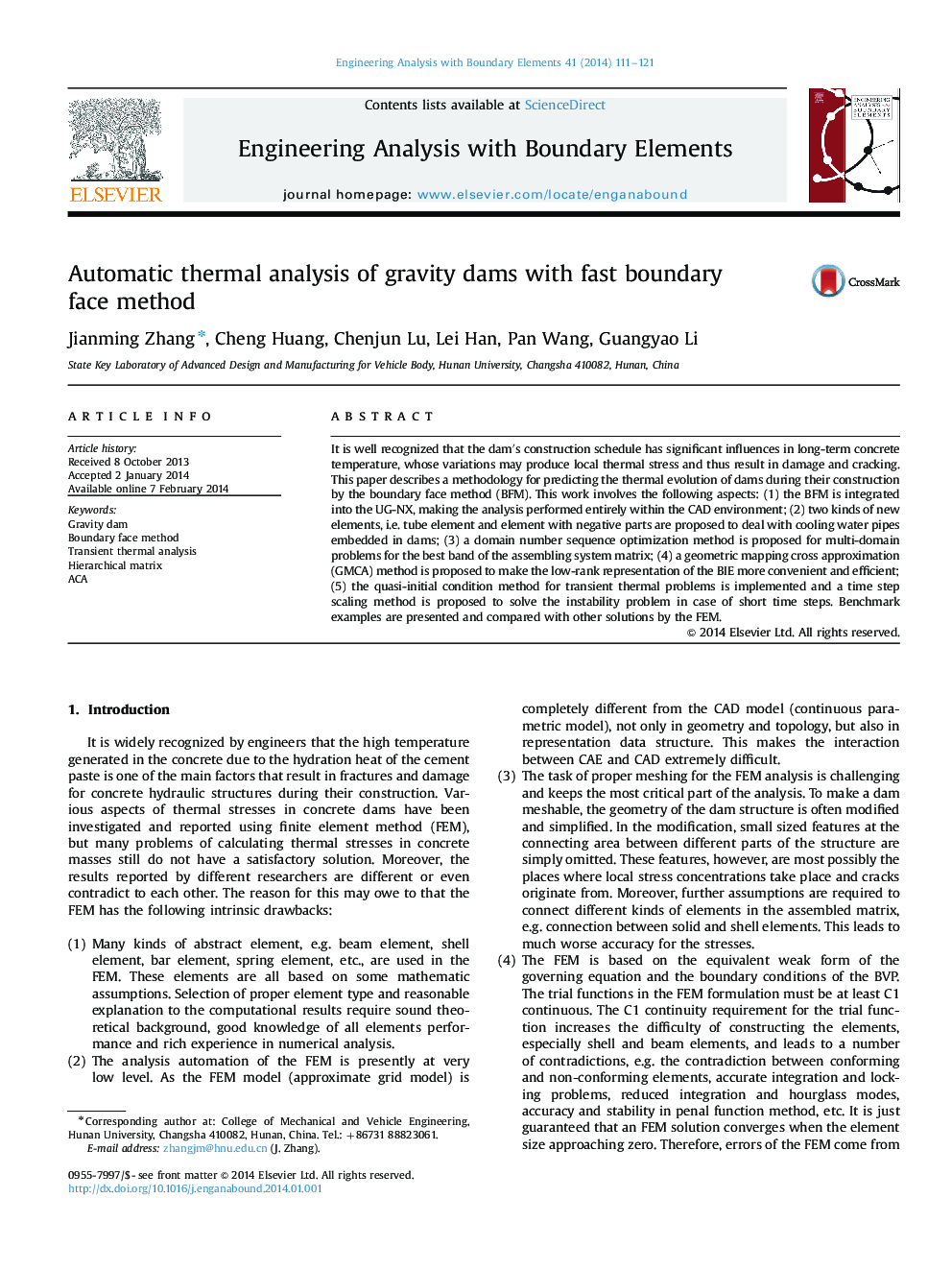| Article ID | Journal | Published Year | Pages | File Type |
|---|---|---|---|---|
| 512611 | Engineering Analysis with Boundary Elements | 2014 | 11 Pages |
It is well recognized that the dam's construction schedule has significant influences in long-term concrete temperature, whose variations may produce local thermal stress and thus result in damage and cracking. This paper describes a methodology for predicting the thermal evolution of dams during their construction by the boundary face method (BFM). This work involves the following aspects: (1) the BFM is integrated into the UG-NX, making the analysis performed entirely within the CAD environment; (2) two kinds of new elements, i.e. tube element and element with negative parts are proposed to deal with cooling water pipes embedded in dams; (3) a domain number sequence optimization method is proposed for multi-domain problems for the best band of the assembling system matrix; (4) a geometric mapping cross approximation (GMCA) method is proposed to make the low-rank representation of the BIE more convenient and efficient; (5) the quasi-initial condition method for transient thermal problems is implemented and a time step scaling method is proposed to solve the instability problem in case of short time steps. Benchmark examples are presented and compared with other solutions by the FEM.
